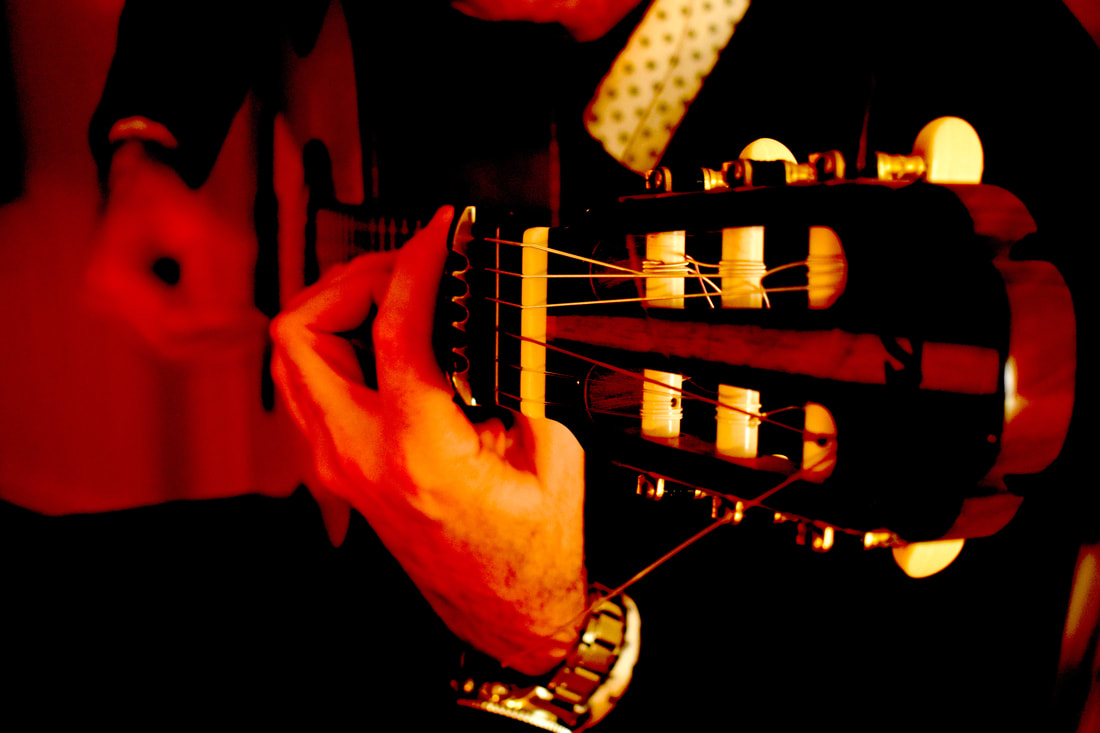Before you get started, please ensure you're sitting properly with correct guitar posture, and your hand is nice and relaxed, as Rafael discusses on his flamenco course.
What is a rasgueo? Why do I want to learn it?
Rasgueo means in Spanish 'strum'. Before we look at the theory, here is what they sound like (when done after decades of experience!) - keep an eye on Rafael's right hand.
The rasgueo techniques are found in all styles or 'palos' of flamenco – from the solea (above) to the buleria, rumba, tango and so forth.
Let's begin with the five 'beat' rasgueo. This is best demonstrated visually: take a look at the below taken from Rafael's course.
As Rafael explains in the summary above, the four finger rasgeo is the same process – just drop the little finger.
Remember to keep your hand loose and relaxed. This only comes with a lot of time with the guitar, practising, so you get comfortable with it. The same goes for performing: you will naturally tense up your hands, and this only gets better with experience unfortunately!
In the video below, Rafael looks at common student mistakes with the five and four-finger rasgueado. Specifically, common mistakes are:
1. Wrong hand position (too tense, angled incorrectly)
2. Too much thumb pressure when resting on the sixth – that is, the thickest – string.
Take a look for an in-studio demonstration of mistakes and how to fix (from Rafael's course). (FYI – if you buy the course, you'll get the full series of videos, and in higher quality!)
The five and four finger rasgueo strums can be found in multiple parts of Rafael's performance of the solea above, as well as all the other flamenco palos.
Rafael explains more fully these rasgueos, how to play them, common mistakes and other techniques (the golpe, picado and 'fan') in his flamenco course – which you can check out here.
Learn from a Master Who's Performed for Royalty: Start Your Flamenco Journey Today
- Unlock this article & video library for free
- Join thousands of guitarists who finally got past only 'knowing some basic chords'
- Learn flamenco from a lifelong performer & celebrity teacher from Madrid
- Rafael has taught EOB (Radiohead), Jack Peñate & played for HRH Elizabeth II (etc)
By entering your email you agree to receive email updates from Flamenco With Rafael. See our Privacy Policy.




